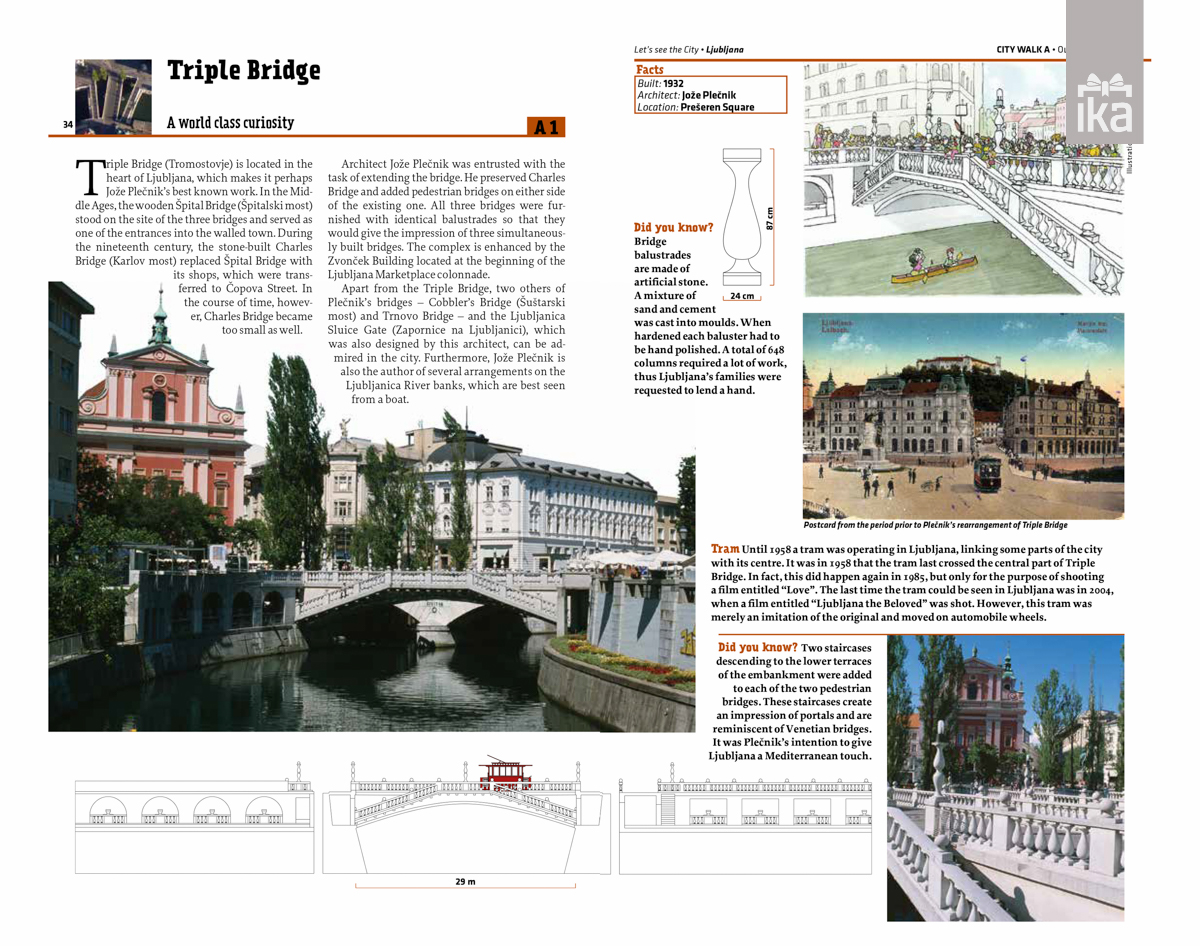You can spend years without going into a gallery or concert hall, but everyone has an intimate connection with the arts of architecture and fashion, and downtown Ljubljana is great place to observe these two expressions of creativity combined with design and engineering. While I’ve been struggling to keep up with the city’s stylish inhabitants, my guide to its built environment for the last few years has been a small, easy to carry book called Let’s See the City! Ljubljana: Architectural walks and tours, by the architects Špela Kuhar and Robert Potokar (2012, Piranesi Foundation) At a cost of just €18, it’s well worth a place on your shelf or in your bag if you live in the city, or are planning an extended trip and would like to learn more.

The book is laid out chronologically and as a series of six themed walks and five tours. It uses hundreds of photographs, maps, illustrations and plans to show the buildings, as well as the interiors of many places that are difficult to enter, thus putting the city in the palm of your hands. An attractive and well-designed book, it’s as easy to navigate as Ljubljana itself.

Plečnik is the big name when it comes to the city’s architects, but the book shows how there’s much more than his contributions to admire, leading you through the medieval Old Town and Secessionist/Art Nouveau quarters like Miklošičeva, with their colourful and decorative structures, on to post-WW2 Ljubljana and up to today, with the historical development of the city clearly laid out in ways that bring the streets to life. What’s more, unlike Vienna, London, Paris and so on the various buildings and views are relatively close to each other, and nearly all could be seen – from the outside, at least – in a leisurely walk over the course of day, with plenty of café or bar breaks to read up on and enjoy your surroundings.

Take the time to do so and you’ll learn more about the buildings that give Ljubljana much of its character, and of where, for example, the medieval ends and the Baroque begins, how Mayor Hribar compares to Mayor Janković in terms of putting their mark on the city, and what the rivals and students of Plečnik got up to (and if you don’t know Ravnikar, you should, with a key example of his work shown here).
In short, this book contains a wealth of knowledge that’s sure to enrich your time spent in Ljubljana, and is one of the volumes in my apartment that I return to the most, and with most pleasure. You can find it in various bookstores, or order it direct from the authors here, while all our stories about architecture in Slovenia can be found here.
Related: 25 Things to Know about Ljubljana & What's on in Ljubljana this Week







